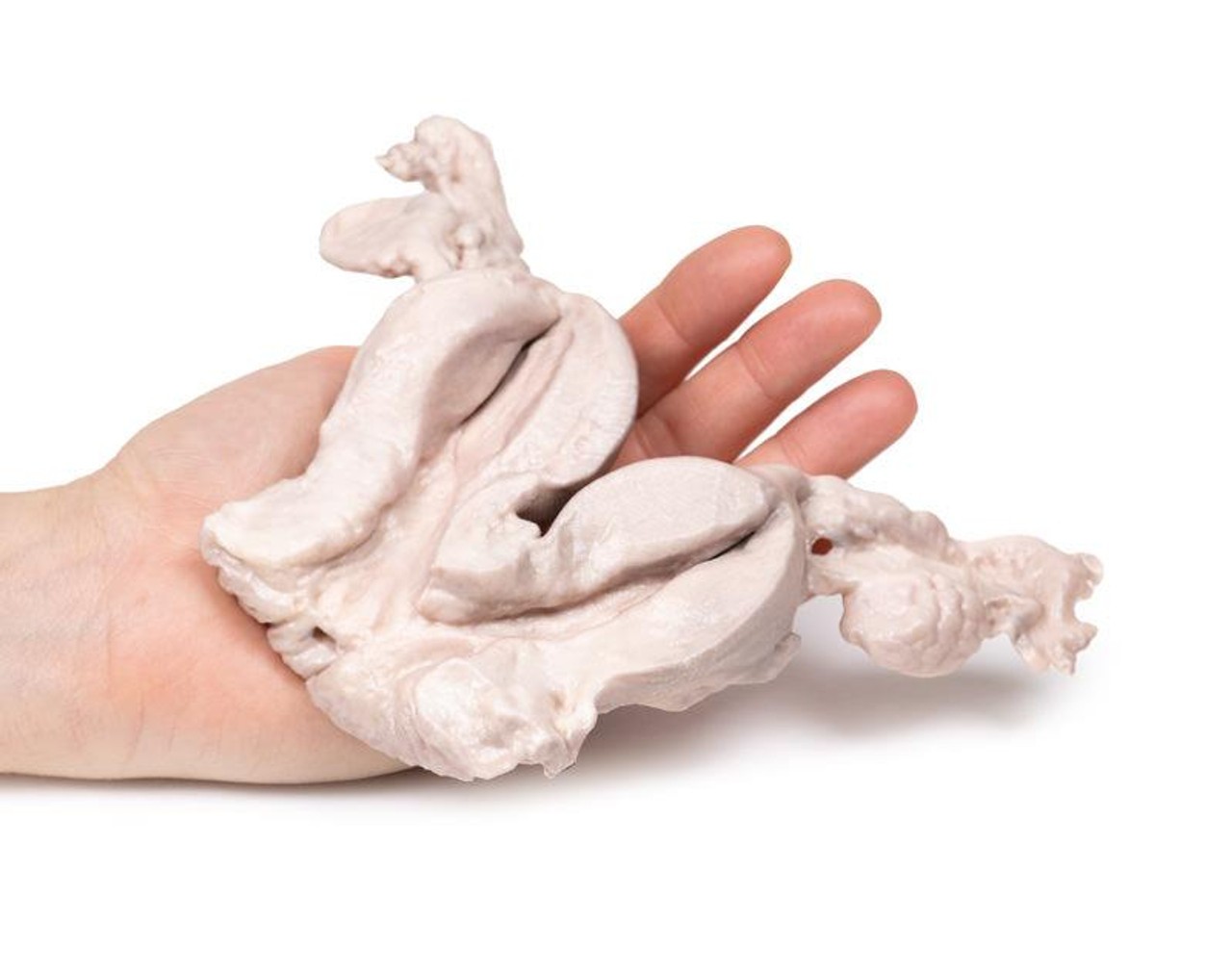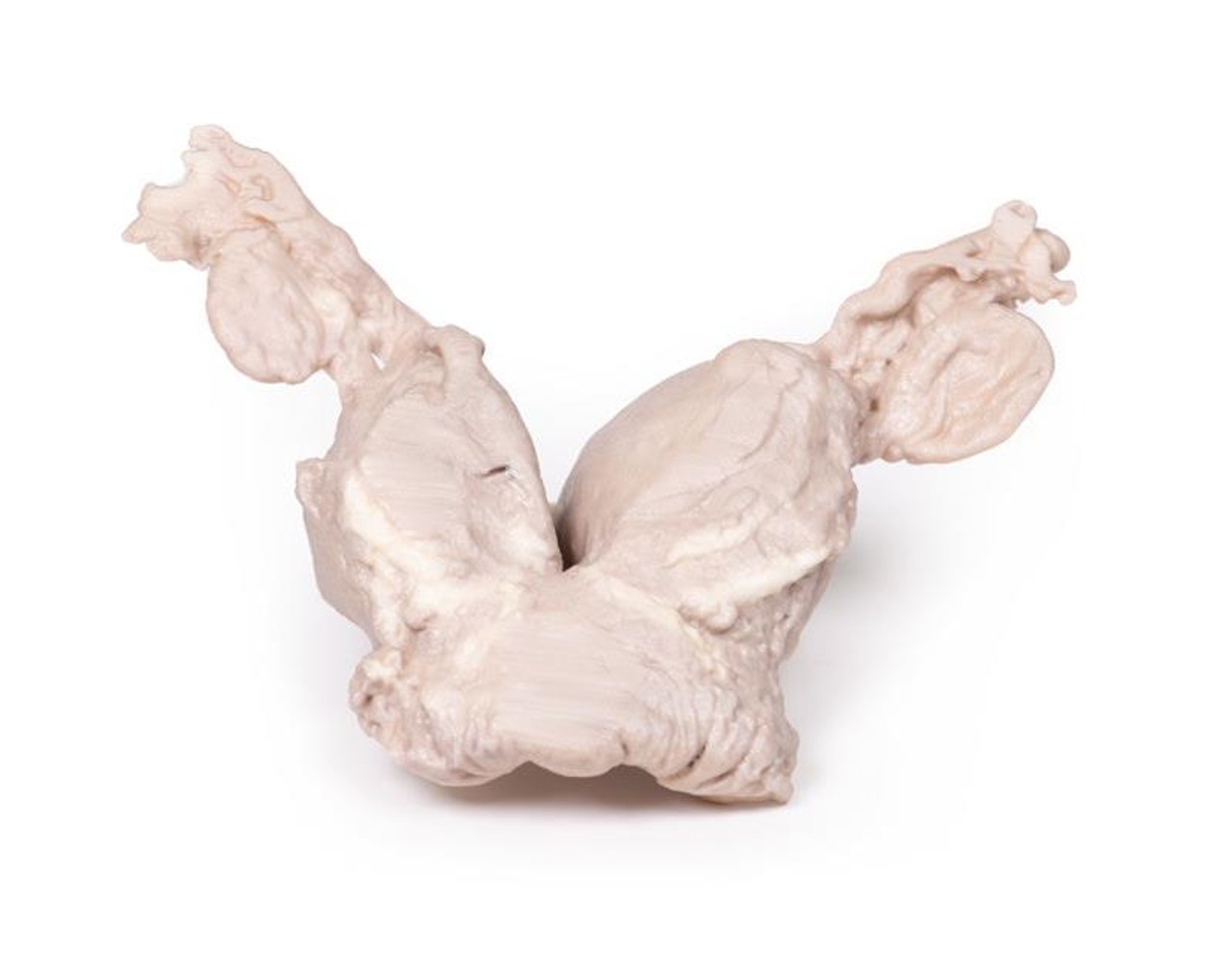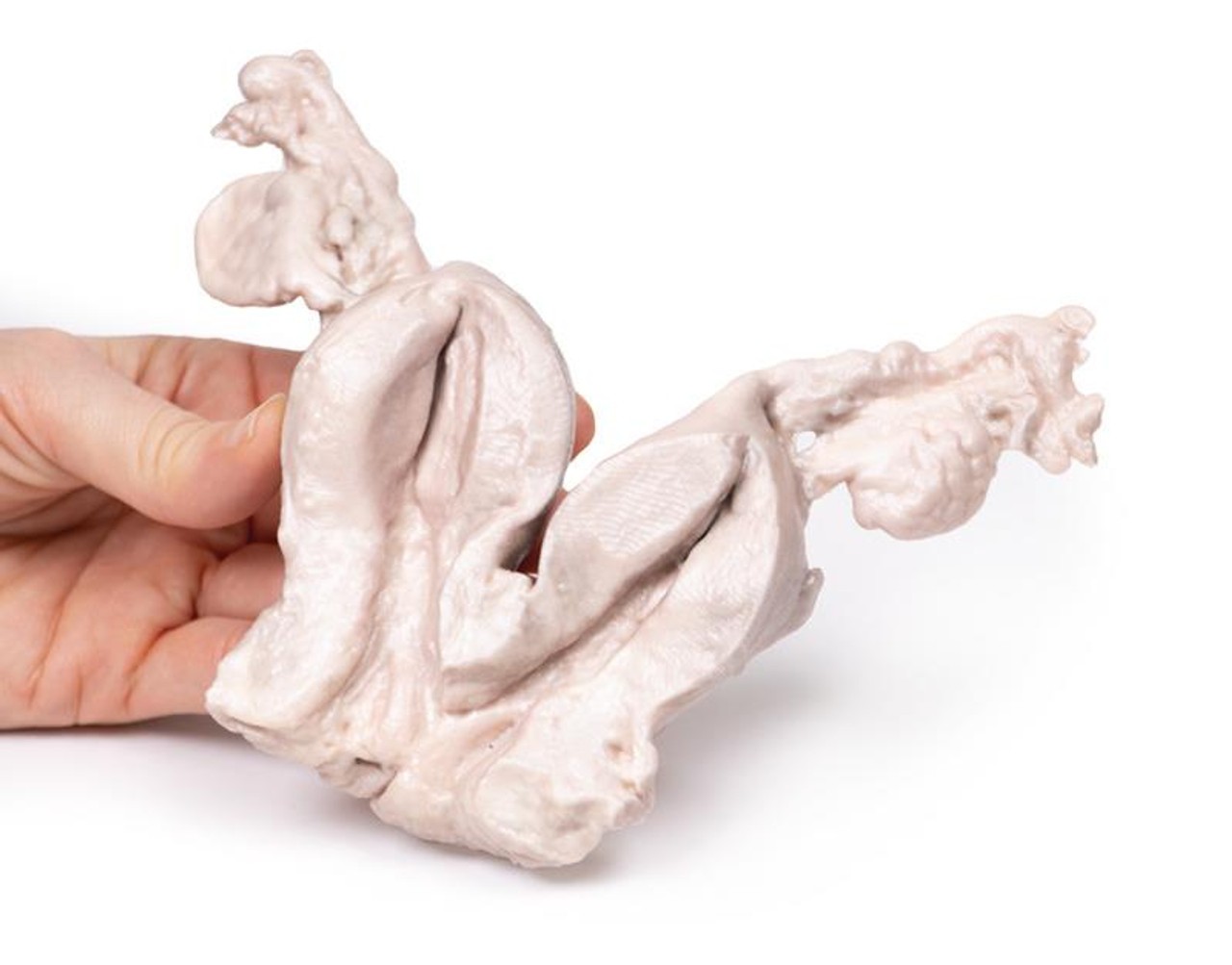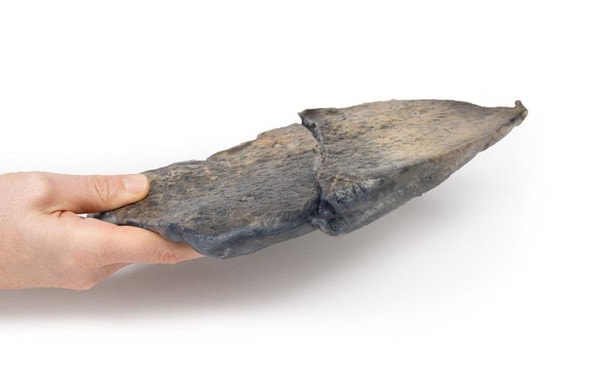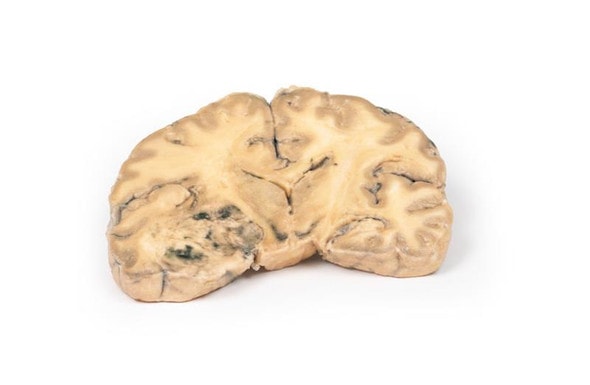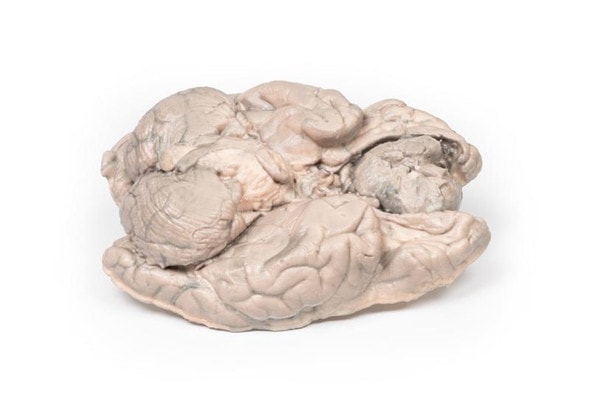Description
Developed from real patient case study specimens, the 3D printed anatomy model pathology series introduces an unmatched level of realism in human anatomy models. Each 3D printed anatomy model is a high-fidelity replica of a human cadaveric specimen, focusing on the key morbidity presentations that led to the deceasement of the patient. With advances in 3D printing materials and techniques, these stories can come to life in an ethical, consistently reproduceable, and easy to handle format. Ideal for the most advanced anatomical and pathological study, and backed by authentic case study details, students, instructors, and experts alike will discover a new level of anatomical study with the 3D printed anatomy model pathology series.
Clinical History
A 36-year old female has a large postpartum hemorrhage after the birth of her 4th child by breech delivery. Her previous 3 children have all been breech deliveries, and no miscarriages. She has a history of intermittent mild abdominal pain. The obstetricians were unable to stop the bleeding and performed an emergency radical hysterectomy and bilateral salpingo-oophorectomy. The patient and baby made a full recovery.
Pathology
This hysterectomy specimen is of a bicornuate uterus, fallopian tubes and ovaries; sliced coronally and mounted to display cut and external surfaces. Both uterine bodies are equal in size and share a common cervical canal. A few small cysts are present in the cervix.
Further Information
A bicornuate uterus is a congenital uterine malformation where the uterus fundus has an indentation of more than 1 cm. The vagina and cervix are usually normal. There is generally one cervix. There are usually two moderately separate endometrial cavities. Bicornuate uterus develop during embryogenesis when the Mullerian ducts only partially fuse instead of completely fusing.
The risk of developing these malformation increases if exposed to diethylstilbestrol (DHS) in-utero, a synthetic estrogen previously used to prevent pregnancy loss. The karyotype of most women with uterine malformations is 46,XX.
These malformations are present in around 0.5% of women, although the actual number may be greater as not all women are symptomatic. Symptoms may include pelvic pain (cyclic and non-cyclic), abnormal uterine bleeding and discharge and urinary tract infection (UTI). In pregnancy bicornuate uterus may lead to recurrent miscarriage, pre-term labor, fetal growth restriction, fetal malpresentation and placenta previa. Malpresentation of the fetus leads to increased need for caesarean section. There is increased risk postpartum or placental retention and postpartum hemorrhage.
Bicornuate uterus is usually diagnosed with pelvic ultrasound scan. MRI scanning is rarely used to consolidate the diagnosis. Most cases do not require any treatment.
Advantages of 3D Printed Anatomical Models
- 3D printed anatomical models are the most anatomically accurate examples of human anatomy because they are based on real human specimens.
- Avoid the ethical complications and complex handling, storage, and documentation requirements with 3D printed models when compared to human cadaveric specimens.
- 3D printed anatomy models are far less expensive than real human cadaveric specimens.
- Reproducibility and consistency allow for standardization of education and faster availability of models when you need them.
- Customization options are available for specific applications or educational needs. Enlargement, highlighting of specific anatomical structures, cutaway views, and more are just some of the customizations available.
Disadvantages of Human Cadavers
- Access to cadavers can be problematic and ethical complications are hard to avoid. Many countries cannot access cadavers for cultural and religious reasons.
- Human cadavers are costly to procure and require expensive storage facilities and dedicated staff to maintain them. Maintenance of the facility alone is costly.
- The cost to develop a cadaver lab or plastination technique is extremely high. Those funds could purchase hundreds of easy to handle, realistic 3D printed anatomical replicas.
- Wet specimens cannot be used in uncertified labs. Certification is expensive and time-consuming.
- Exposure to preservation fluids and chemicals is known to cause long-term health problems for lab workers and students. 3D printed anatomical replicas are safe to handle without any special equipment.
- Lack of reuse and reproducibility. If a dissection mistake is made, a new specimen has to be used and students have to start all over again.
Disadvantages of Plastinated Specimens
- Like real human cadaveric specimens, plastinated models are extremely expensive.
- Plastinated specimens still require real human samples and pose the same ethical issues as real human cadavers.
- The plastination process is extensive and takes months or longer to complete. 3D printed human anatomical models are available in a fraction of the time.
- Plastinated models, like human cadavers, are one of a kind and can only showcase one presentation of human anatomy.
Advanced 3D Printing Techniques for Superior Results
- Vibrant color offering with 10 million colors
- UV-curable inkjet printing
- High quality 3D printing that can create products that are delicate, extremely precise, and incredibly realistic
- To improve durability of fragile, thin, and delicate arteries, veins or vessels, a clear support material is printed in key areas. This makes the models robust so they can be handled by students easily.


